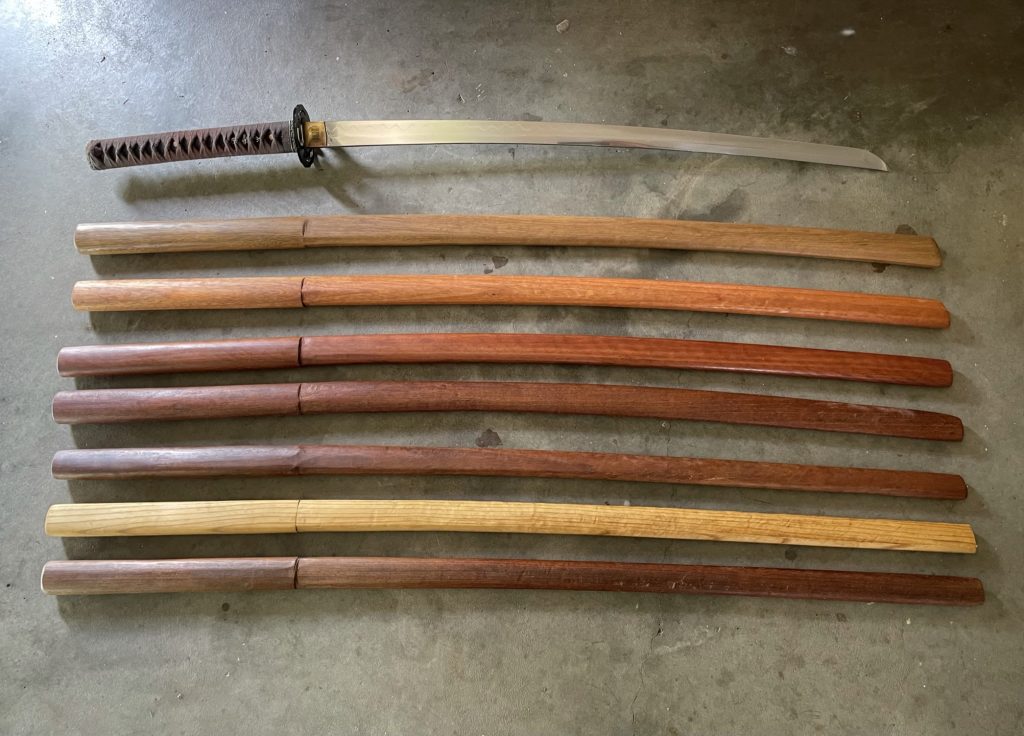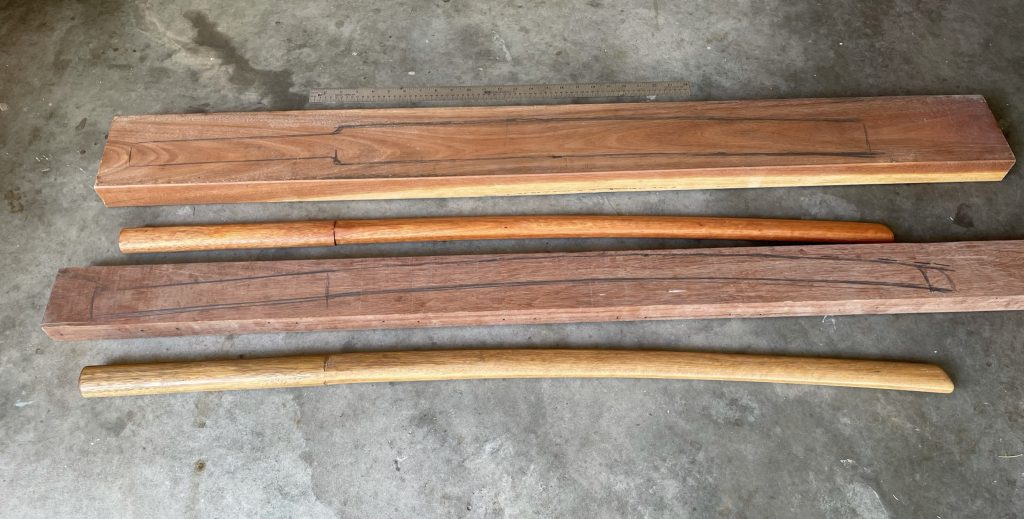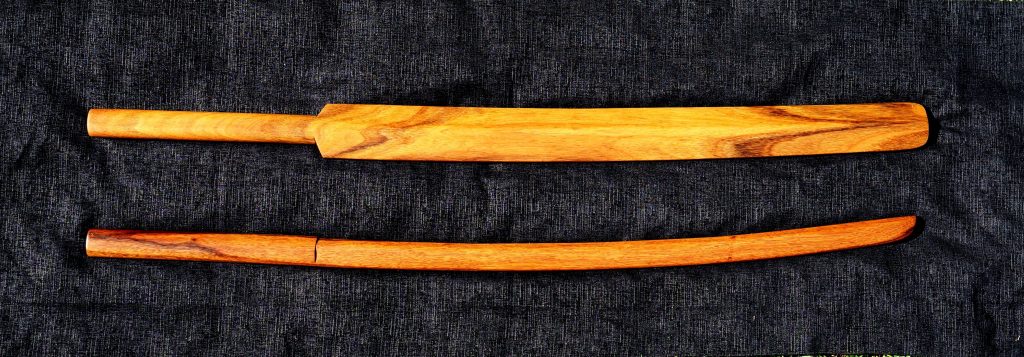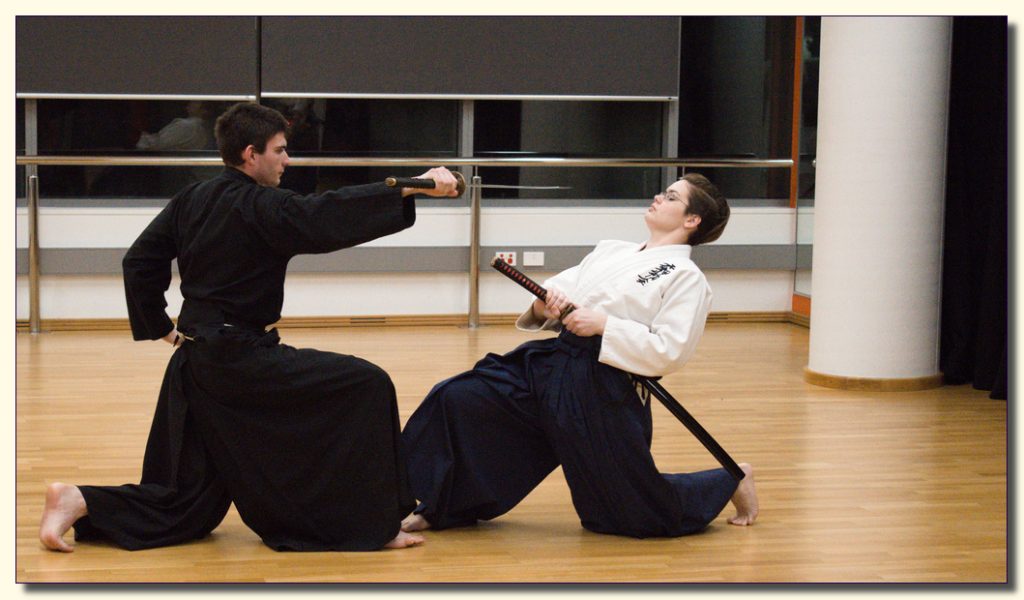It is an annoying convention for any sword depicted on television or movies to make a metallic schwing sound as it is drawn. Particularly irritating when it is meant to be a katana, given they have a wooden scabbard, so the scrape of metal on metal would be a difficult sound to achieve in real life.
Scraping the blade as it is drawn is an indication of poor skill; it is very much frowned upon in our dojo and is considered valid grounds for a strike across the back of the head with the instructor’s tenarashi.
The other compulsory noise for a screen sword is a loud whoosh as it cuts through the air. This also seems to be considered an indication of expertise by most beginner students wielding any weapon and is highly desired by them. (I recall a documentary in my youth that showed the whoosh sound for movies being produced by people in a sound booth waving strips of carpet around).
Some common names for actual, non movie, Japanese swords:
Sasanoyuki (笹の雪) “snow on a bamboo leaf” as it cuts like snow slips off a leaf
Sotto hasamibako (そっと挟箱) this refers to clothes falling from a portable storage box, silently and without notice.
Matsukaze (松風) wind in the pines, a sword that cuts as though nothing has happened.
I have yet to come across a traditional sword with a name like, “grates when drawn”, or “whooshes like a bull-roarer”.
Swords and their users were prized for their ability to cut effortlessly, without noise or fanfare. Aside from the aesthetic aspect, it just makes basic tactical sense. Silence is not just golden, it is deadly.
Kai Cho
www.warriorway.net
Post Script
One of my favourite sword names is Hatchō-Nenbutsu-dango-zushi, which has been translated as:
“if you cut somebody with this blade, the person doesn’t notice it because of the sharpness and can still walk eight chō and, apart from that, you can skewer stones with it like dumplings.”
(M. Sesko, Tameshigiri The History and Development of Japanese Sword Testing, 2014, p.250)



